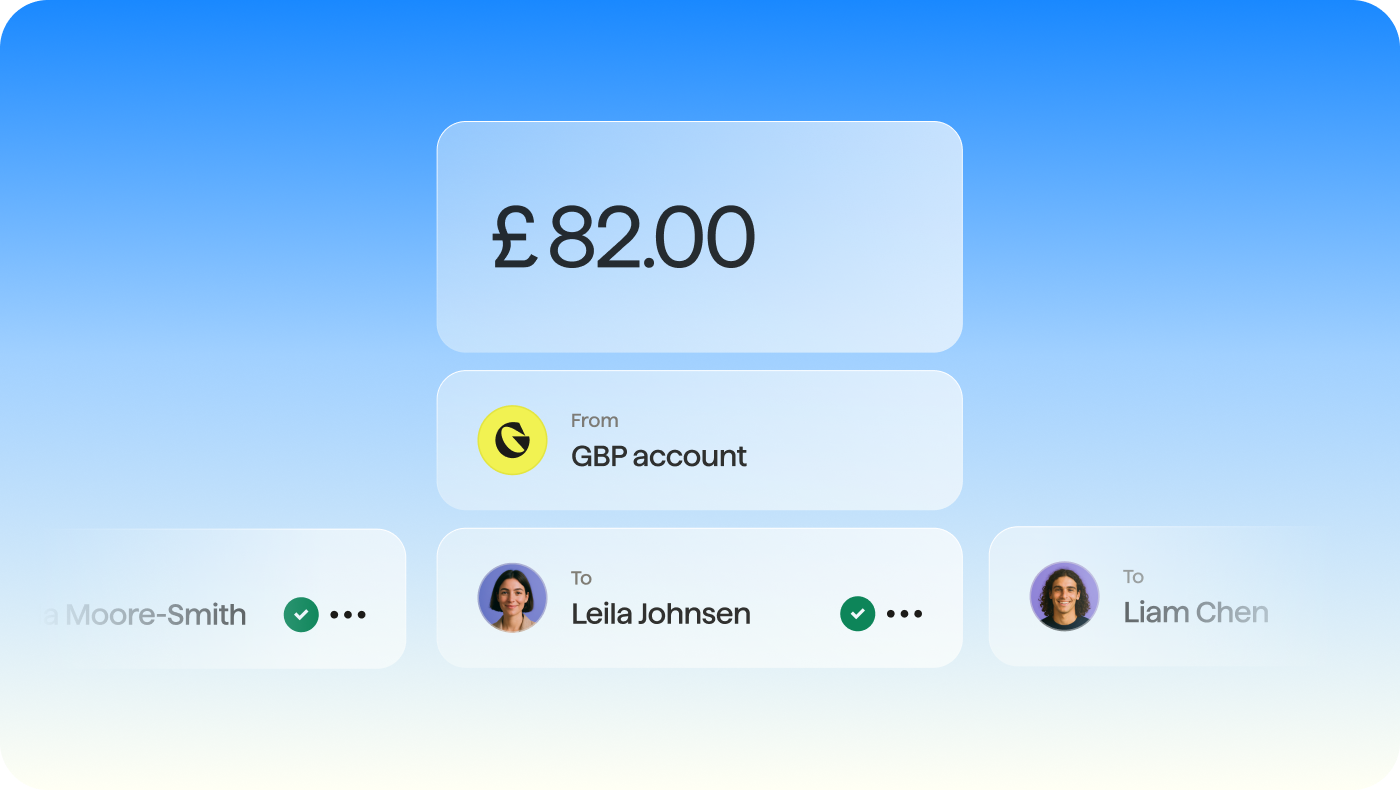
Direct Debit vs Recurring Payment
Last editedOct 20252 min read

If your business takes regular payments from customers, you’ll need to find a convenient, secure processing method. It helps to weigh up the difference between Direct Debit and recurring payments as part of this process. While both recurring card payments and Direct Debit enable a regular payment plan, there are differences between the two. Here’s what to consider when comparing a recurring payment vs Direct Debit system.
What is a Direct Debit?
A Direct Debit gives a business the authority to pull money directly from the customer’s bank account. It’s a pull-based payment method authorising payments to be taken as they’re due. This is done with the full permission of the customer, who must complete a Direct Debit Mandate form either on paper or online. With this authorisation, the organisation can collect regular or one-off payments as needed.
What is a recurring payment?
Recurring card payments are also referred to as a Continuous Payment Authority (CPA). Like Direct Debit, they are taken with authorisation taken from the customer. Instead of a bank account, payments are pulled via a debit or credit card until the arrangement is cancelled. One difference between recurring payments and Direct Debit is that the customer provides credit card details rather than bank details for authorisation.
Uses of Direct Debit vs recurring payment
Both payment methods can be used in a variety of situations.
Direct Debit is most frequently used:
To pay utility bills and council taxes on a recurring date each month
To pay for subscription services like gym memberships or streaming content
To spread the cost of a larger purchase on account
To make a one-time payment to a business
Recurring card payments are most frequently used:
To pay for subscription services that need fast clearance
To pay for higher value goods or foreign currency
To set up repayments with payday loan companies
The purpose of recurring payment vs Direct Debit is quite similar. Both can be used to make regular payments of fixed or variable amounts, as well as one-off future payments.
How to collect Direct Debit payments with GoCardless
1.
Create your free GoCardless account, access your user-friendly payments dashboard & connect your accounting software (if you use one).
2.
Easily set up & schedule Direct Debit payments via payment pages on your website checkout or secure payment links.
3.
From now on you'll get paid on time, every time, as GoCardless automatically collects payment on the scheduled Direct Debit collection date. Simple.
What is the difference between recurring payment and Direct Debit?
Now that we’ve covered their main uses and similarities, what is the difference between Direct Debit and recurring payment? Here’s how the two split apart:
Source of funds: Direct Debit is pulled from a bank account, while recurring card payments are charged to the credit or debit card account.
Payment timing: Recurring card payments offer immediate or next-day clearance, while Direct Debit may take several business days to clear.
Cancellation: Customers can cancel a Direct Debit directly through the bank, while recurring card payment accounts must be closed with the organisation.
Security: If money is taken in error, the Direct Debit Guarantee means the bank will provide a full refund – not the business. Customer disputes with a card payment are more difficult to resolve and could end up costing the business money.
Fees: Recurring card payments cost a monthly fee in comparison to Direct Debit, which charges a small per-transaction fee.
Failure rates: As with any credit card payment, there’s a danger that recurring card payments will fail. Direct Debit reduces payment failure rates by drawing funds directly from the bank on an agreed-upon day.
Should you accept Direct Debit or recurring card payment?
If you need funds to clear faster, recurring card payments have the slight edge over Direct Debit. However, both forms of payment offer a steady, predictable cash flow. In most cases, businesses prefer to use Direct Debit. With the bank acting as a middleman for payment processing and security, both business and customer have added protection. When looking at the cost of Direct Debit or recurring card payments, Direct Debit is the clear winner with far lower per-transaction fees. Failure rates are also reduced with Direct Debit, reducing payment churn. Bank accounts don’t regularly expire like credit cards, and even if a customer switches accounts the Current Account Switch services automatically transfers all payment instructions.
If your business offers subscription services, it’s worth setting up Direct Debit for a steady, predictable form of payment. GoCardless makes it easy to collect recurring payments with pull-based Direct Debit, for a better payment experience that integrates easily into your existing website or app.
We can help
GoCardless helps you automate payment collection, cutting down on the amount of admin your team needs to deal with when chasing invoices. Find out how GoCardless can help you with ad hoc payments or recurring payments.

